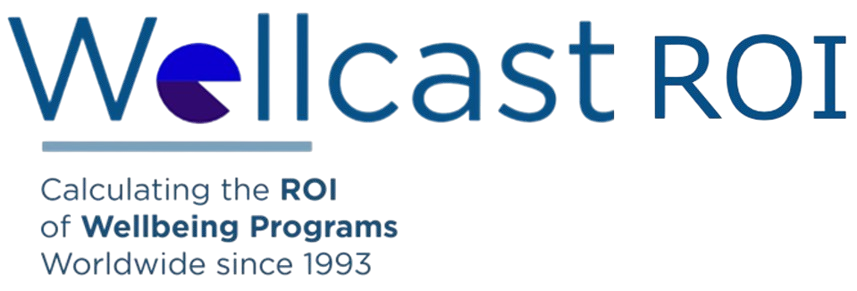Today marks World Diabetes Day!
As we unite globally to raise awareness of diabetes, it’s time to get real about the high costs of managing this chronic disease—and more importantly, the impressive return on investment (#ROI) from preventive measures.
Let’s explore together why preventing and addressing diabetes early is both a health priority and the best financial move for public health, insurers, employers, and individuals.
Hidden Cost of Diabetes Complications
Diabetes doesn’t just affect blood sugar— it has a ripple effect on multiple aspects of health, from the heart to mental well-being.
The costs are steep. For example, in Switzerland, managing diabetes costs over $13,000 per patient annually, while in the UK, France, and Germany, the cost remains around $6,000 per person.
With over 500 million adults worldwide living with diabetes, these numbers add up quickly. But where do these costs go?
Here’s a breakdown of the most expensive complications related to diabetes:
- Cardiovascular Disease – Leading cause of death among diabetics.
- Kidney Disease – Often requires dialysis or kidney transplants.
- Nerve Damage – Leads to pain, numbness, and foot ulcers.
- Foot Ulcers & Amputations – Due to poor circulation and nerve damage.
- Eye Disease (Retinopathy) – Can cause vision loss and blindness.
- Infections – High blood sugar impairs immune function.
- Hyperglycemia (High Blood Sugar) – Requires frequent emergency care.
- Hypoglycemia (Low Blood Sugar) – Urgent intervention needed if mismanaged.
- Liver Disease – Associated with Type 2 diabetes and potential liver failure.
- Dental Issues – Increased risk of gum disease and tooth loss.
- Hearing Loss – Common among diabetics, requiring hearing aids.
- Mental Health Issues – Anxiety and depression, which require therapy.
- Skin Conditions – Infections and slow wound healing.
These complications escalate treatment costs. Cardiovascular disease, for example, requires expensive long-term medication and surgeries. Eye diseases like diabetic retinopathy can triple treatment costs if left unchecked. Mental health and dental problems are often ignored, making the condition worse.
The Unseen Cost to Productivity
Beyond the direct medical costs, diabetes impacts productivity in the workplace through absenteeism, presenteeism (working but not being fully productive), and early retirement.
Studies show that people with diabetes miss 10 extra days of work per year compared to those without the disease. If diabetes is compounded by neuropathic symptoms, productivity losses jump to 26.3 days per year.
Additionally, individuals with diabetes tend to retire 0.7 years earlier than their peers, impacting not only personal finances but also the broader economy.
As the prevalence of diabetes rises and the working population ages, these productivity losses will only increase.
This has a substantial economic burden, affecting businesses and the economy at large. Employers face rising turnover related costs and loss of productivity, while individuals may struggle with income loss due to early retirement or inability to work.
Prevention Programs: Hidden ROI Heroes
The good news? Prevention programs offer very high return on investment (#ROI). Early intervention can prevent or delay diabetes onset, significantly reducing the risk of costly complications.
Lifestyle-based programs — including physical activity, healthy eating, and routine health check-ups — have proven effective in reducing diabetes-related healthcare costs.
Workplace Sedentary Habits: Four out of ten EU workers hold sedentary jobs, such as office workers, call-center staff, and drivers.
Economic Challenges: Rising living costs impact healthy eating and diabetes management. According to a Diabetes UK survey, 77% of people report making trade-offs in these areas.
Undiagnosed Diabetes: One in three people with diabetes remains undiagnosed.
Public health campaigns and accessible diabetes management resources can provide essential support for at-risk individuals, particularly those facing economic challenges.
Moreover, initiatives which impose taxes on sugary drinks, show just how effective policy-level interventions can be.
Investing in prevention means fewer hospital visits, higher workplace productivity and better public health. These programs save money while improving individuals’ health and well-being.
Addressing Health Inequities: A Must-Have Prevention Strategy
While diabetes prevention programs are crucial, accessibility is equally important. People from lower-income communities or ethnic minorities often face barriers such as limited access to healthcare, poor diet, and higher levels of stress. These factors contribute to higher rates of diabetes and its complications.
These populations have higher rates of diabetes-related amputations and hospitalization, underscoring the need for tailored prevention efforts that target underserved groups.
ROI Beyond Physical Health: Mental Health Matters
The link between diabetes and mental health is another key area where investment in preventive care pays off.
Nearly one-third of people with diabetes experience mental health issues like depression and anxiety, which in turn can worsen diabetes outcomes.
Investing in mental health support, such as counselling and peer support, can improve both physical and emotional well-being, which in turn reduces healthcare costs and boosts productivity.
The Takeaway: The ROI of Prevention
The cost of inaction on diabetes prevention is too high—economically, socially, and personally.
Prevention and early intervention offer real, tangible #ROI that can be measured at the employer, insurer, and administrative levels.
Let’s use World Diabetes Day to spread the word: today each step toward healthy habits, stress reduction, health checks, access to healthy food, treatment and monitoring, will lead to big savings—and better health—tomorrow.
At Wellcast ROI, we help businesses, insurers, and public health organizations calculate the financial impact (#ROI) of diabetes prevention programs.
Wellcast ROI© calculator measures the savings in medical costs, productivity losses, and disability-related expenses specific to each program and population, making it easier to see the long-term benefits of investing in health. Wellcast ROI© is a scientific calculator, using comprehensive epidemiological and productivity databases at country and industry levels.
With 30 years of experience worldwide in calculating the ROI of health and wellbeing solutions, we provide proven insights for informed decision-making.

